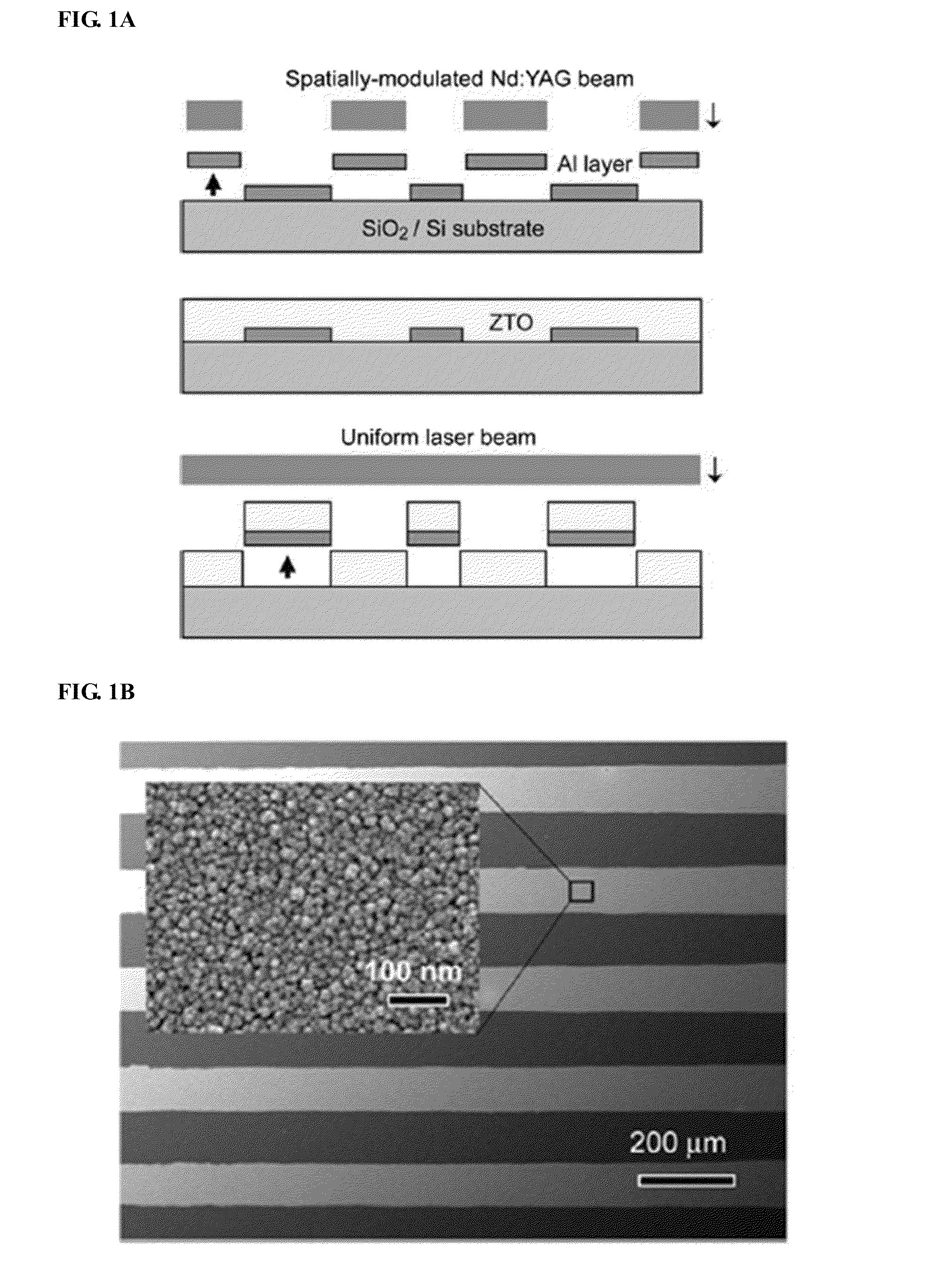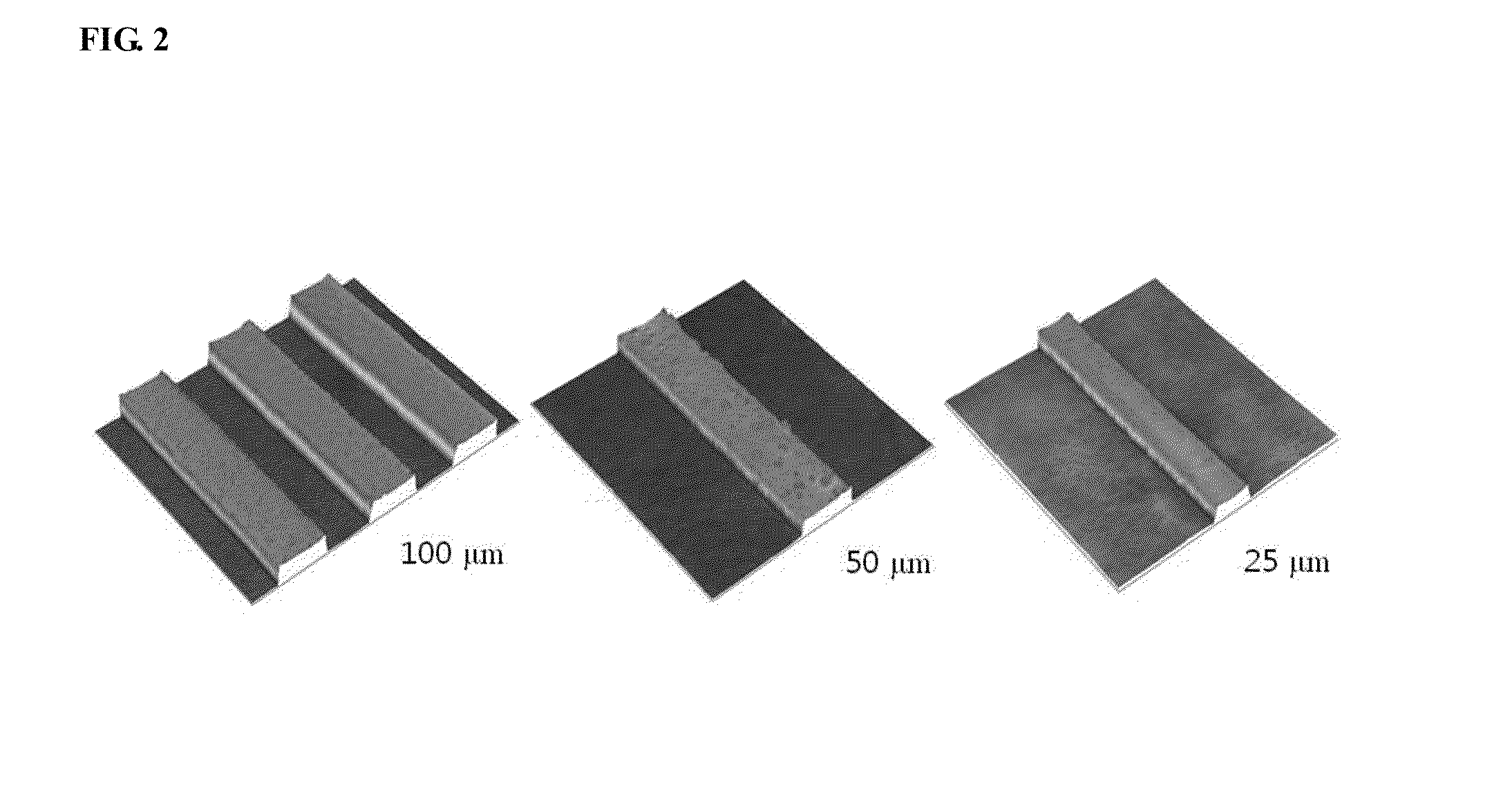Method of patterning thin film solution-deposited
a thin film and solution-deposited technology, applied in the direction of basic electric elements, electrical apparatus, semiconductor devices, etc., can solve the problems of low mobility, poor performance of solution-processed tfts, and long-term instability of organic semiconductors, etc., to achieve the effect of reducing the number of deposited solutions, reducing the difficulty of selectively deposited solution-state materials on substrates, and improving the stability of the substra
- Summary
- Abstract
- Description
- Claims
- Application Information
AI Technical Summary
Benefits of technology
Problems solved by technology
Method used
Image
Examples
Embodiment Construction
[0034]Reference will now be made in detail to various embodiments of the present invention, examples of which are illustrated in the accompanying drawings and described below. While the invention will be described in conjunction with exemplary embodiments, it is to be understood that the present description is not intended to limit the invention to those exemplary embodiments. On the contrary, the invention is intended to cover not only the exemplary embodiments, but also various alternatives, modifications, equivalents and other embodiments that may be included within the spirit and scope of the invention as defined by the appended claims.
[0035]In the following description of the present invention, detailed descriptions of technical constitutions related to thin film patterning that are well known in the art will be omitted.
[0036]FIGS. 1A and 1B are views schematically showing a process of performing a method of patterning a thin film according to an exemplary embodiment of the pre...
PUM
 Login to View More
Login to View More Abstract
Description
Claims
Application Information
 Login to View More
Login to View More - R&D
- Intellectual Property
- Life Sciences
- Materials
- Tech Scout
- Unparalleled Data Quality
- Higher Quality Content
- 60% Fewer Hallucinations
Browse by: Latest US Patents, China's latest patents, Technical Efficacy Thesaurus, Application Domain, Technology Topic, Popular Technical Reports.
© 2025 PatSnap. All rights reserved.Legal|Privacy policy|Modern Slavery Act Transparency Statement|Sitemap|About US| Contact US: help@patsnap.com



